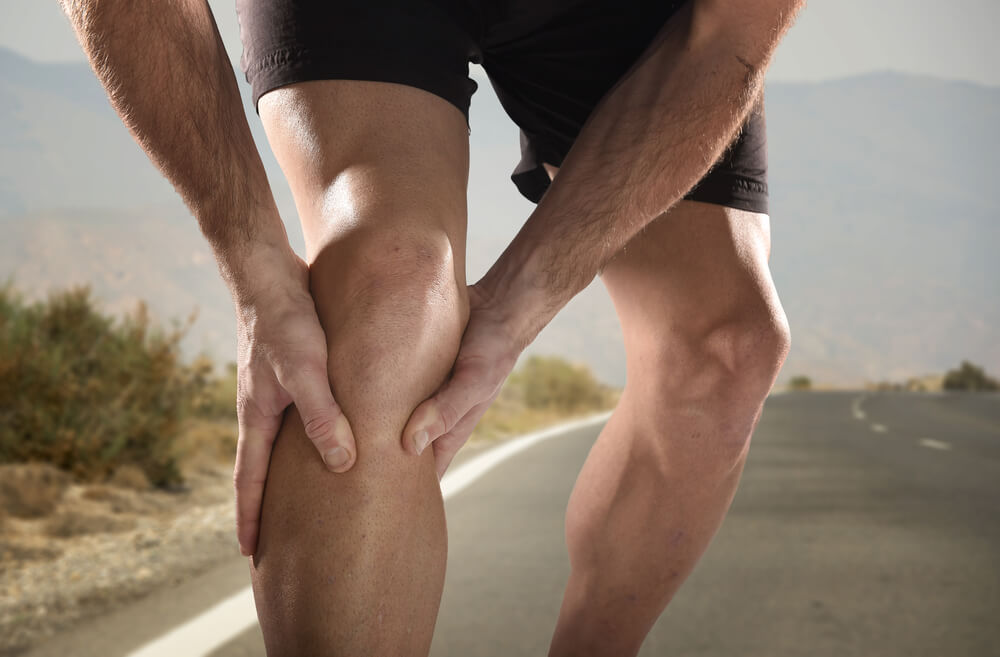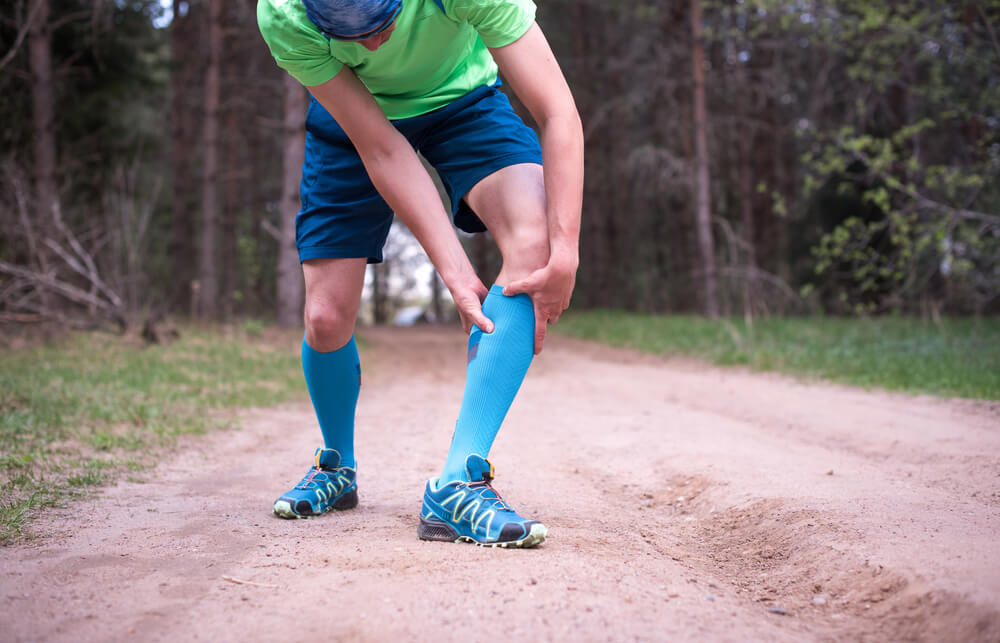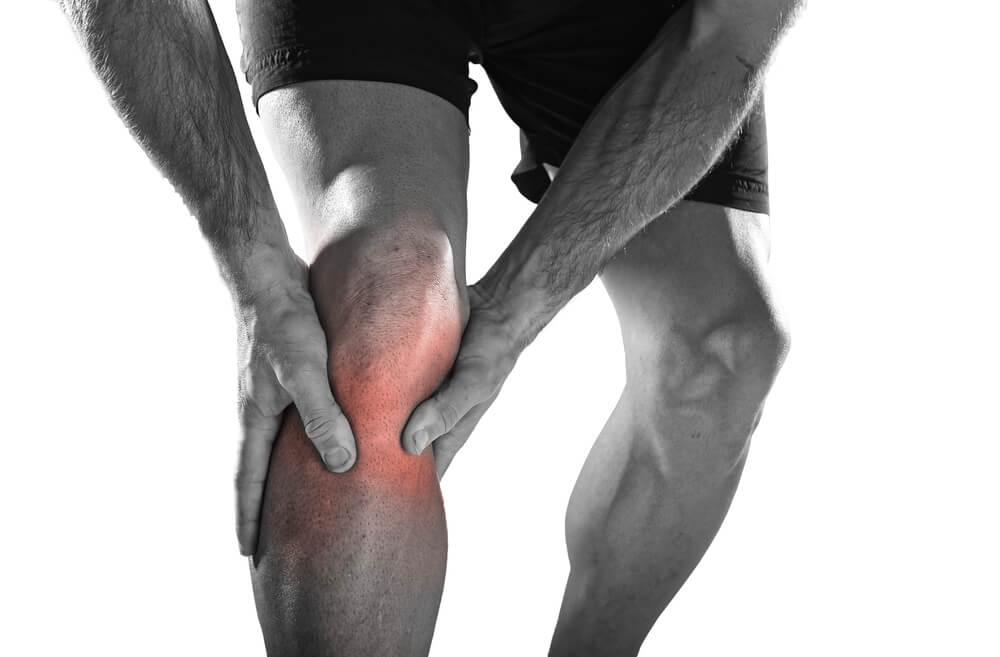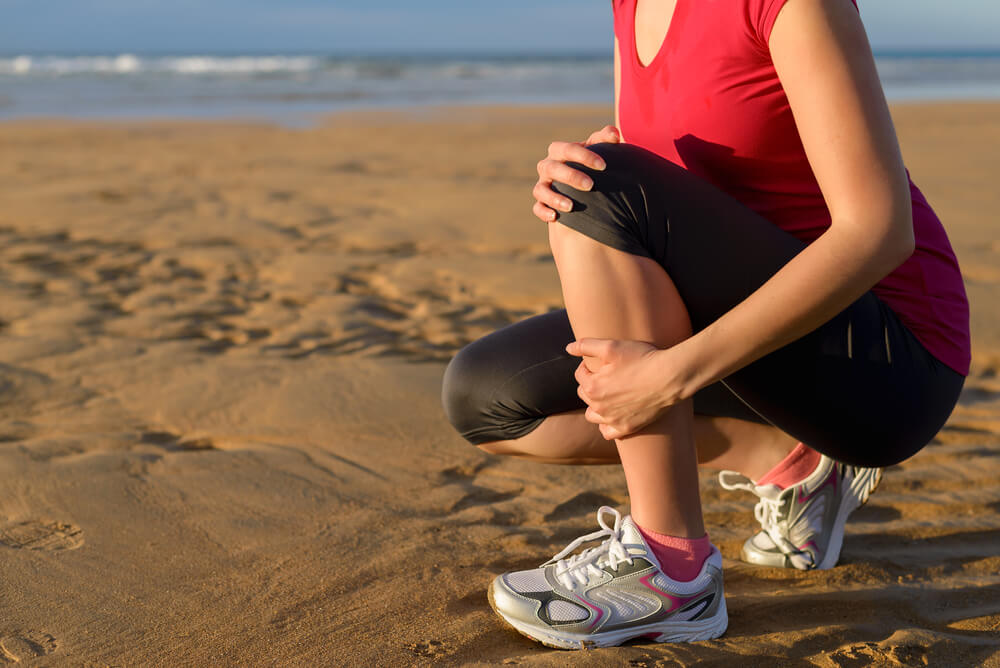
Many suffer through shin splints. But, you don’t have to be one of those people. We have some tips on how to avoid it and what to do if you aren’t so lucky.
You hit the road running, ready to kick some asphalt. A couple of strides later your shins are overcome with pain, a pain that won’t go away and only gets worse. It’s one of the most frustrating injuries: The infamous shin splints.
Few things are worse than having a training program derailed by an annoying chronic injury. After all, you were there motivated, ready to better your body and mind, but couldn’t. Not to worry. We’re going to break down shin splints so you can understand the causes, prevention, and treatment.

What Are Shin Splints?
Shin splints are also known as tibial stress syndrome.
What is it?
It’s all in the name. The condition is a result of too much stress on the tibia. The tibia is the large bone in your shin located on the inside.
Don’t jump to any conclusions just yet. Feeling pain in the tibia is by no means an instant diagnosis of shin splints. We have a couple other possibilities that should be considered.
Pain on the anterior side could be compartment syndrome. This is due to the muscles in the lower leg swelling up increasing pressure. The swelling alone is an issue, but even more so, when there is no room to swell. Think of it like blowing up a balloon that doesn’t get bigger. The more swelling, the more pressure is put on a compartment that doesn’t expand. This diagnosis requires pressure testing by a medical professional.
The other possibility is a stress fracture or incomplete crack in the tibia or fibula. This is definitely the worst-case scenario. The healing process requires a lot of rest and minimal pressure on the lower leg. Usually, a stress fracture is indicated by constant pain even when no pressure is on the area. Generally, you’ll be able to pinpoint one exact spot the pain is coming from. The only way to be sure of a stress fracture is by taking x-rays.
Shin Splints Symptoms
If you’re reading this then you likely already know how it feels. It feels like someone put headphones on your shins and won’t stop playing the free U2 album that’s stuck on your iPhone. Basically, it’s a general pain in the shins.
The pain, however, is mainly only felt while running or doing other impact activities. It may also hurt when you try to flex your foot and lift your ankle. Shin splint pain should be very mild to nonexistent at rest or during low impact activities. If not, it could be a more serious injury.
The jury is still out on the exact physiological cause of shin splints, but there are some strong theories. Many researchers believe shin splints are caused by small tears in the muscles resulting in micro separation from the bone. Others believe it is an inflamed periosteum, a tissue that covers and wraps around the tibia. Still others believe it’s due to weak lower leg or stabilizer muscles. Today the research is focused on the tibia and the stress placed on it.
No matter the theory, it’s clear to see that they all revolve around issues with the tibia. More importantly, regardless of the physiological cause we do know the activities or habits that cause the injury.

Causes Of Shin Splints Pain
Understanding the source of the pain is a step in the right direction. What’s truly important, and what you should care about most, is the cause of the injury. Treating the symptoms will only provide acute relief for a chronic problem. Treating the cause of the pain will ultimately lead to long-term, pain-free success.
Gaining awareness of these risk factors is the first step to treatment and prevention.
Overpronation Might Be A Factor
One main cause of shin splints is overpronation of the foot. In layman’s terms, the foot is collapsing inwards. The resulting action is a collapsing arch and additional pressure on the tibia. This can lead to a whole host of other ankle, knee, and hip issues so it should not be taken lightly.
There are many possible solutions. One is to get inserts or orthotics to bolster arch support. A proper foot arch keeps the foot from pronating excessively. Still, an insert is a band-aid approach that doesn’t actually fix the body.
There are reasons the foot is pronating. It could be a weak arch, physiological structure or muscular tightness/imbalances throughout the lower body. Either way, correcting imbalances will be key. The exercise protocol listed at the end will ensure you restore balance to the body and eliminate pain.
The Force Is Too Strong With This One
Running is defined by only one foot contacting the ground at any given portion of a stride. Everyone has a dominant leg that inevitably takes on more weight and pushes off more. A leg becomes dominant in a variety of ways. It could have come from a sport specific demand, be innate or it could be trained. Even favoring one side by 1% is enough to cause shin splints.
It may sound insignificant, but when multiplied by thousands of strides each run, the imbalance grows quickly over just a couple weeks. Luckily the strength program will focus on creating symmetry so one leg doesn’t undergo excessive force.
The road can also be the enemy in this scenario. Running on slanted roads, tracks or surfaces increases impact on one side of the body. It also creates a host of muscle and soft tissue issues. The solution is simple and takes minimal effort. Simply alternate which side the slant is on. Hopefully, that doesn’t mean running on the wrong side of the road or running directly at a pack of avid runners.
Stride Length And Style
We all want to look good while we exercise and run however this is a different kind of style. Running with a heavy heel strike puts loads of pressure on the shins. As the heel strikes down, the ground reaction force travels directly to the tibia.
Changing to a mid-foot strike alleviates this impact. Rather than the bone absorbing most of the shock, the supporting muscles and stabilizers will go to work. This barefoot style of running definitely requires an adaptation period. The body needs time to adapt to the new style; this will be quite evident in your calves after your first run. Converting to mid-foot strike also challenges the mind to consciously work to run differently. It’s best to start running this way for only brief periods of time on softer surfaces.
Stride length is also related to the stride style. Overstriding, or taking too big of step, changes the biomechanics of running. First off, it forces the leg into a heel strike pattern since the leg gets further from the body. As the leg strikes further from the core, the force doesn’t travel and disperse through the body well, again increasing force through the shins. Shortening the stride keeps the legs underneath the body and reduces the overall impact on the shins.
Get Some New Kicks
You’re likely very fashionable as is, running in spiffy new Jordan’s that are meticulously well kept for Instagram photos. In the off chance that you’re not and parting ways with those dirty old shoes is simply unfathomable, then listen up.
Shoes are like tires; they wear down and don’t work as well the more miles that get put on them. They naturally wear out in the places that we need support the most. This, in turn, increases pressure on the places that need more support.
Regular runners should invest in well-fitted shoes at least every six months. It can be tough to part with the shoes that treated you so well for so many miles, but they’ll do just fine as a pair of lawn mowing shoes.
This Is Too Tight
No, we’re not talking about those curly shoelaces that cut off your circulation both physically and socially. We’re talking about your whole body. Tight muscles go hand in hand with training. Contracting a muscle means shortening it. Shorten a muscle enough over time and it will get shorter (tighter). The remedy consists of consistently stretching these tight muscles.
Runners generally have the same tight muscles and all benefit from the same stretches. In particular, place significant focus on stretching the Achilles, calves and tibialis anterior. Stretching these muscles increases ankle mobility tremendously.
As we know from earlier, we can’t simply stretch the surrounding muscles and expect everything to be fixed. The body is a kinetic chain, meaning that if something bad happens at one joint it will show up in another. In this case the ankle, knee and hip are all closely related. Be sure to also stretch the quads, hip flexors, abductors, hamstrings and glutes.
Don’t Do Too Much, Too Soon
Finally a cause we can feel good about: Being overambitious. Trying to run too much too quickly is the most common cause of shin splints. It makes sense because force is the most important factor for bone development. Given the proper time, bones will become stronger to withstand the training. But, just like muscles, bones need time to recover.
Training programs should aim to increase weekly mileage by at most 10% a week. On paper this may sound substantial or it may not unless we consider this: We would never increase the weight we lift 10% each week. If we did, we’d be pinned to the ground by the weights in a couple of short weeks. It’s easy to force drastic increases with running. Remember that just because it can be done, it doesn’t mean it should be.

Prevent Shin Splints & What You Do If It’s Too Late
Rest is the best, but unfortunately, isn’t the sexy miraculous answer we want. As we discussed, it’s quite possible the shin splints were a result of increasing runs too quickly. In that case, the treatment and prevention is simple. Rest till they’re definitely recovered, then increase your runs more gradually.
If the shin splints are still mild and tolerable, then decreasing running volume could provide enough of a break rather than stopping completely. Listen to your body and it will tell you what it can handle. Your body is like your spouse, ignore it long enough and eventually it will blow up on you.
Switch It Up
There’s clearly a trend between force and shin splints. One simple way to reduce force is changing the running surface. Switching from asphalt to trails, sand, grass or even treadmills reduces the ground reaction force. Since the surface is softer it will take more energy to run the same speed. Even though it may seem like you’re getting less work done, you’ll actually be working harder.
Instead of changing the surface you can also change the activity. Consider cross-training and taking up swimming, cycling, rowing or other cardio machines.
Don’t Forget: Ice, Ice Baby
The oldest trick in the book is still around and that’s because it works. Applying ice with a cover to the shins is proven to help. The ice reduces swelling and inflammation. Ice your shins at least three times a day for two weeks as you recover. Also consider icing them after future runs as a preventative measure.
Wrap It Up
Creating stability by using wraps is another way to keep running on the road. The wraps help connective tissues stay stable while keeping muscles tight to reduce the stress on the lower legs. Using an Ace bandage, wrap the lower legs from the ankles to below the knees. The wrap should be snug, but not cut off circulation.
Fortify Yourself
Make use of your downtime and take care of any imbalances or weaknesses that caused the shin splints in the first place. Remember the body is connected and any imbalance will affect other areas. For example, weak calves or abductors can cause instability furthering impact and creating poor form.
For the next several weeks perform the following exercises at a moderate tempo for two sets of 15 reps, three times a week:
Band Walk (alternating directions)
Clamshell
Glutes Bridge (single leg if possible)
Heel Tap
Single Leg Deadlift
Single Leg Calf Raise
Spell the alphabet with your foot
Sock Pick-Up Using Toes
To relieve tight muscles stretch areas for two sets of 45 seconds each, at least three times per week. Which areas?
We’re talking calves, tibialis anterior, quads, hip flexors, glutes, hamstrings, abductors and the lower back.
Conclusion
Shin splints suck. They really do. Understanding what causes them allows us to avoid them. Sadly, some still get them.
There are several solutions to employ to speed up recovery and keep exercise regimes intact. It’s important to not rush back too soon and be pain-free for at least two weeks before resuming normal training. It can take anywhere from a couple of weeks to months to heal shin splints. It all comes down to how seriously recovery is taken.
No matter how long it takes, keep a positive attitude and find passion in other types of exercise. The open roads will always be there to run; be smart and make sure you’re always able to run on them.
By Raphael Konforti MS, CPT
Latest posts by Raphael Konforti (see all)
- The Best 4 Day Workout Split For Greater Gains - Feb 6, 2017
- The Best Lower Chest Workout For A Better Body - Aug 15, 2016
- How To Get Rid Of Shin Splints - Jul 7, 2016











Thanks for the awesome article. Who knew so many different factors could be the culprit!
Hey Nazmina,
Glad you got great use of the information… thanks for stopping by.
Terry Asher